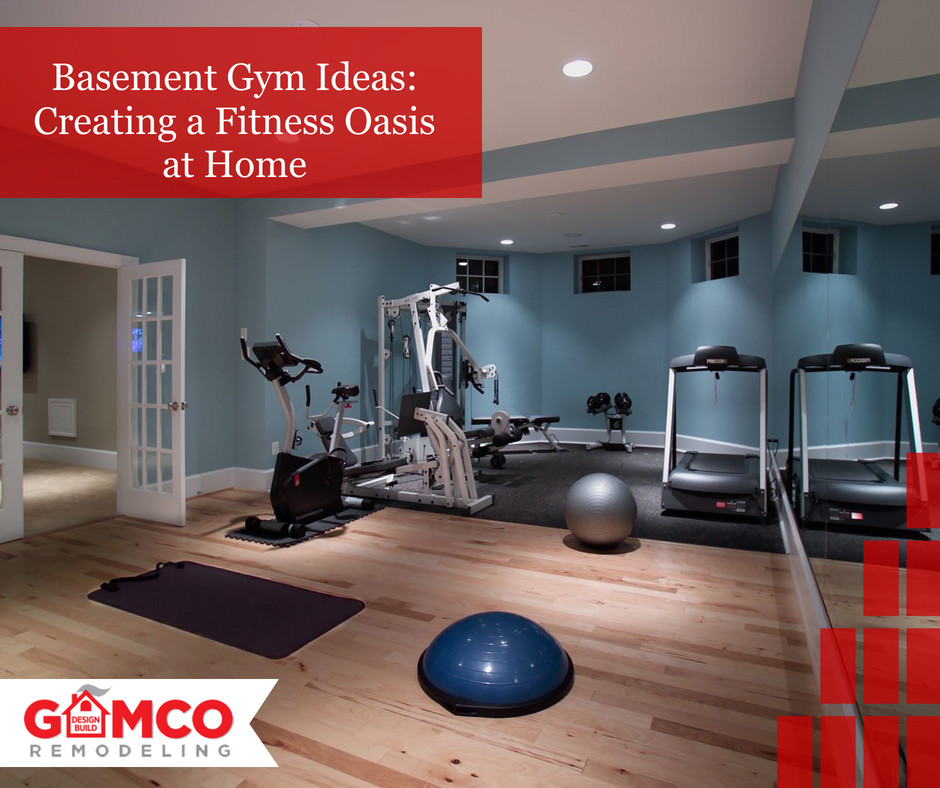
Designing Your Home Basement Gym
Creating the perfect home basement gym is an essential part of a comprehensive health and fitness plan. With proper planning, furniture selection, and equipment choice, you can develop a functional and inviting exercise space that supports your health and wellness goals. By considering your space needs, home gym layout, and budget, you can design the perfect basement gym that matches your individual fitness needs and makes working out more enjoyable. With the use of a few creative touches, you can easily create a home gym that helps you stay motivated and is fun, functional, and efficient to use. Whether you are an experienced athlete or just beginning your fitness journey, a well-designed home gym in your basement can revolutionize your workouts and help you achieve your fitness goals.
Personalizing Your Space
One of the most fun aspects of exploring basement gym ideas is personalizing the space to match your style and motivation.
- Fresh paint: Set the tone of your gym with energizing colors like orange or calming tones like light blue to create the perfect workout environment.
- Motivational decor: Add posters with motivational quotes, a fitness vision board, or a progress-tracking chart to keep yourself inspired and goal-focused.
- Entertainment: Install a sound system or TV to play workout videos or pump up your favorite playlist to keep the energy high.
- Convenience features: Incorporate a mini fridge to store water, protein shakes, or energy bars. You can also add a storage area for towels, workout gear, and other essentials.
Strategizing Your Home Basement Gym Layout
Creating the perfect home gym can be a daunting task. With proper strategizing and planning, however, you can transform your basement into a well-functioning workout space that allows you to reach your fitness goals. Every layout should serve a purpose, keeping in mind the space restrictions and what type of fitness equipment is needed. To help guide you through the process, we have created a guide on how to best strategize your home basement gym layout while staying mindful of space doctrines.
Trust the fundamentals when designing your layout. Start by mapping out the specific dimensions of the basement and working from there. Consider the size of the room, storage space, and the amount of space that can be comfortably used for exercising. Keep in mind how the chosen fitness equipment will fit and the flow of the space so you can experience a safe and enjoyable workout. If you’re limited on square footage, think vertically and incorporate four-dimensional strategy to make use of all available spaces, even those that may seem too narrow for exercise machines.
Think outside the box when selecting equipment for your home gym. Multi-functioning tools such as a multi-gym and foldable exercise bikes can save both space and money. Advanced tools like mixed reality fitness products can also breath new life in your home gym, allowing you to experience personalized workouts with limitless boundaries.
Finally, do not neglect to properly maintain and clean the equipment regularly. This will not only help extend the lifespan of the equipment, but it also help guard against health and safety risks. Be sure to remove any exercise equipment from view when not in use and pay attention to safety signage.
Safety and Functionality
- Proper ventilation: Ensure there’s enough airflow, especially if you’re doing intense cardio. Consider a fan or air purifier to keep the air fresh.
- First aid kit: Keep a small first aid kit handy, especially for handling minor injuries like muscle strains or small cuts.
This guide will serve as a framework to help you strategize your home basement gym layout. By following these principles, you can create an ergonomic workout space where you can execute every exercise with ease. Additionally, proper strategizing and organizing of the gym will create an inviting atmosphere that will motivate you to reach your fitness goals.
Equipping Your Home Basement Gym
Outfitting your home gym can be an intimidating task, but with some careful planning, it doesn’t have to be. A home gym is a great way to get fit and stay in shape right in the comfort of your own home.
Comfort and Climate Control
- Climate control: Basements can get cold or damp, so consider installing a portable heater, fan, or dehumidifier to maintain a comfortable temperature and air quality.
- Air circulation: If possible, ensure proper ventilation to avoid the space feeling stuffy, especially during intense workouts.
With the right equipment, you can get a comprehensive workout without ever having to step into a crowded gym. To ensure you get the most out of your workout, take some time to equip your basement gym with the right pieces. Start by considering the type of exercises you will do. Consider a mat or platform for different types of strength exercises, fitness machines or free weights for a full-body workout, running machines for cardio conditioning, a set of resistance bands, and finally, a variety of accessories. As you decide on the type of equipment, make sure to also get the right size. It is important to use appropriate weights, mats, and bands that are the right size for you and your goals so that you can maintain correct form. Investing in quality equipment is also a must. Don’t be tempted by cheap knockoffs as they can be unsafe and cause injuries. Make sure you invest in reliable brands and certified pieces from a reputable store. Finally, ensure that you have enough space in your basement gym. The last thing you want is to clutter up your workout area and compromise your safety.
Maximizing Space and Layout
A great way to maximize the space is to purchase wall racks, shelves, and stands to ensure you have enough room for everything. The right equipment will help you stay healthy and fit, so equip your home gym with the right pieces and get to work.
- Create workout zones: Divide your basement into different areas for weight training, cardio, and stretching. This will help you stay organized and maintain focus during workouts.
- Multi-functional equipment: Save space by investing in equipment that serves multiple purposes, like power racks, adjustable dumbbells, resistance bands, or all-in-one home gym machines.
- Movement space: Ensure you have enough room for dynamic movements, such as high-intensity interval training (HIIT), jumping jacks, or yoga.
- Ceiling height: Double-check that your ceiling height accommodates equipment like treadmills, ellipticals, or pull-up bars.
- Storage solutions: Use wall-mounted racks, shelves, or storage bins to keep equipment organized and out of the way.
Managing Costs and Maintenance of Your Home Basement Gym
Creating an effective home-based gym requires careful investment in equipment and maintenance to keep it in the best working condition. A basement gym is a great option as it provides a space to workout without distraction and allows you to exercise in your own home, anytime. From selecting the right equipment to ensuring quality maintenance, there are a few key components to consider when designing and managing a home gym. To maintain costs, you’ll need to calculate the total up-front investment for any equipment you’ll be purchasing, such as weights, workout machines, and space-saving resources. Additionally, it’s important to have a plan for ongoing maintenance to ensure that all of your exercise equipment continues to function as expected. Depending on the type of machines you’ve selected, you may need to hire a professional to conduct regular maintenance checks if you don’t have the necessary tools or experience. Moreover, a basement gym should include proper ventilation as the lack of windows and fresh air can lead to a buildup of dust and moisture which can lead to mold and mildew problems. You can make sure your home gym environment is healthy by installing ventilation systems or using portable fans. In addition, more humid environments can result in rust build-up or other corrosion on steel components, so if this is a concern, investing in equipment cases, such as plastic or nylon cases, that store otherwise exposed steel parts can extend the lifespan of your machines and reduce their maintenance costs. Building and managing a basement gym is a great way to improve your physical health and have a dedicated space to exercise and improve your overall well-being. With a commitment to taking care of each component of the gym, from investment to maintenance, you can ensure that your home gym remains a pleasant and effective environment for fitness.
Leveraging Home Basement Gym Benefits
Breaking the boundaries of traditional gym memberships, a home basement gym provides numerous benefits to working out; from convenience and cost-savings to customized and varied workouts. By leveraging the home basement gym, fitness enthusiasts can ensure that all their workout needs are met without the hassle of daily trips to a traditional gym facility.
The convenience of a home basement gym allows for an individual to work out when and where they choose, regardless of the time or weather outside. The ability to customize your schedule offers flexibility and eliminates potential barriers, such as traffic or commute times. Additionally, there are no extra fees or extra drive-time costs; working out has never been more convenient or economically conscious.
A home basement gym offers greater variety in workout options than a traditional facility. With customizable weight stacks, adjustable dumbbells, and flexible space arrangements, one can have more freedom to mix up their routine and include as many muscle-targeting exercises as they choose. Furthermore, with the ease of controlling one’s environment they won’t require worrying about a lack of equipment or overcrowding.
Cost-savings is another one of the main benefits of a home basement gym. No gym membership fees or administrative costs are required; all that is needed is the initial investment for equipment set-up. With the discounts that come from purchasing larger gym packages as opposed to individual pieces, the initial investment will be well worth the money spent in the long run. Additionally, long-term gym memberships can end up costing more than the initial investment would to set up a basement gym.
Leveraging a home basement gym offers users countless benefits that traditional gym facilities cannot. From convenience and cost-savings to the freedom of customization, the home basement gym provides plenty of opportunities for fitness enthusiasts to reach their exercise goals. Exercise in the comfort of your own home and reap the reward of taking control of your health and reaching your personal fitness goals.
By incorporating these basement gym ideas, you can transform your space into a functional and inviting fitness oasis. Whether you’re lifting weights, doing yoga, or running on the treadmill, a well-designed home basement gym at home will make your workouts more convenient and enjoyable!
For more information about basement Gym Ideas, follow GAMCO Remodeling today!
